An NDA and a prayer to John Lennon’s ghost: How an L.A. guitar repairman fixed a Beatles relic
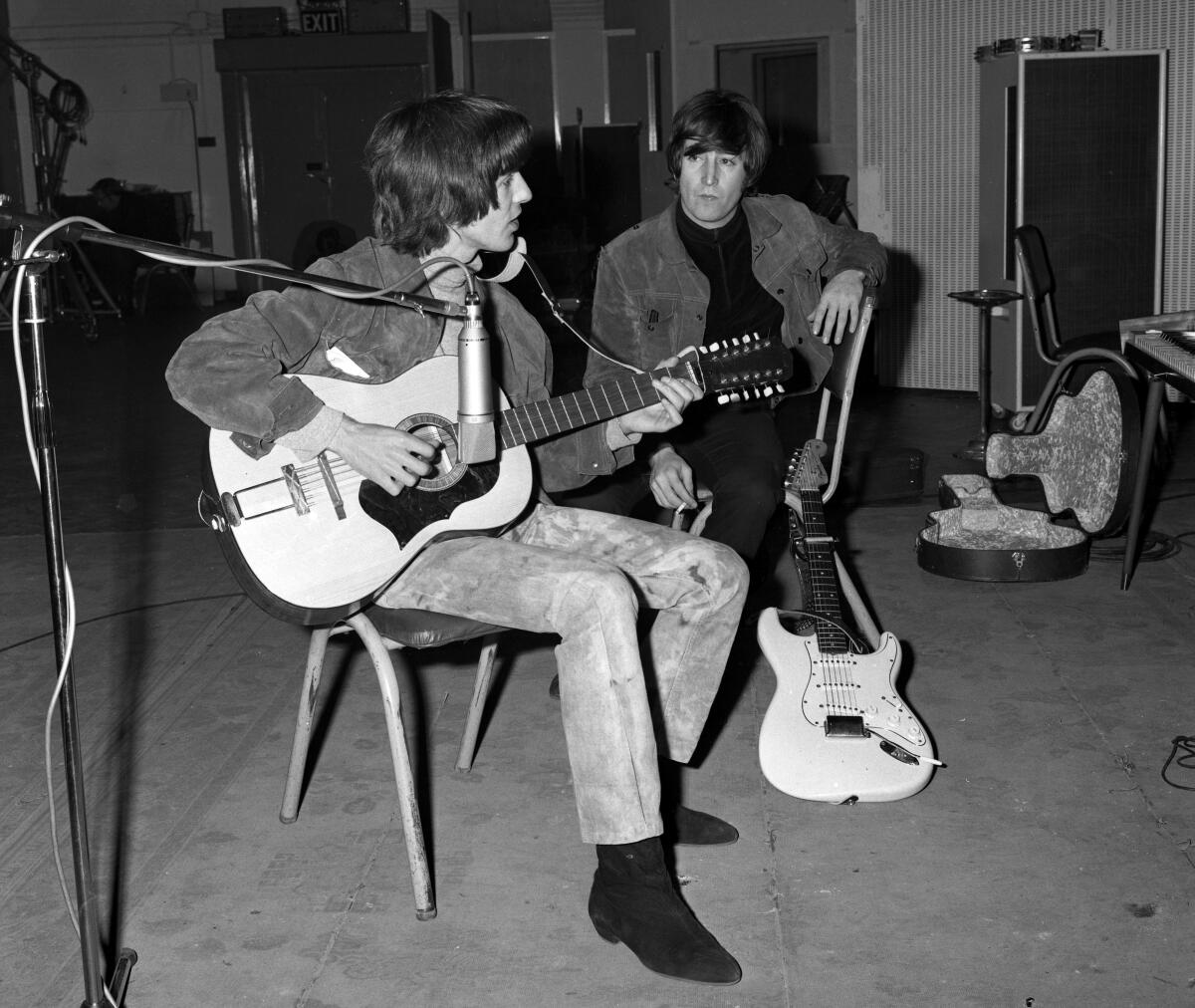
- Share via
Ryan Schuermann had practiced for this moment. That’s all the Arcadia resident could do. In his mind, it was similar to a musician getting ready for a gig: You practice, then you get on stage and play your song and hope everything goes right.
Schuermann was not playing a song, though. He was taking a guitar apart in his Sherman Oaks repair shop to put it back together. Specifically, he was performing a complicated restoration process known as a neck reset. He had to remove the neck from the body of the guitar and then put it back on at a better angle.
And it wasn’t just any guitar — it was a well-known one used by some of the most revered artists of the 20th century. So it was more like getting ready for a gig at Madison Square Garden.
“You can be really nervous, but all you can do is prepare,” he said. “I have done this for 15 to 20 years and I’ve done it a lot. It’s just preparation. I wasn’t super nervous once it’s go time. I was ready ... I just went slow.”
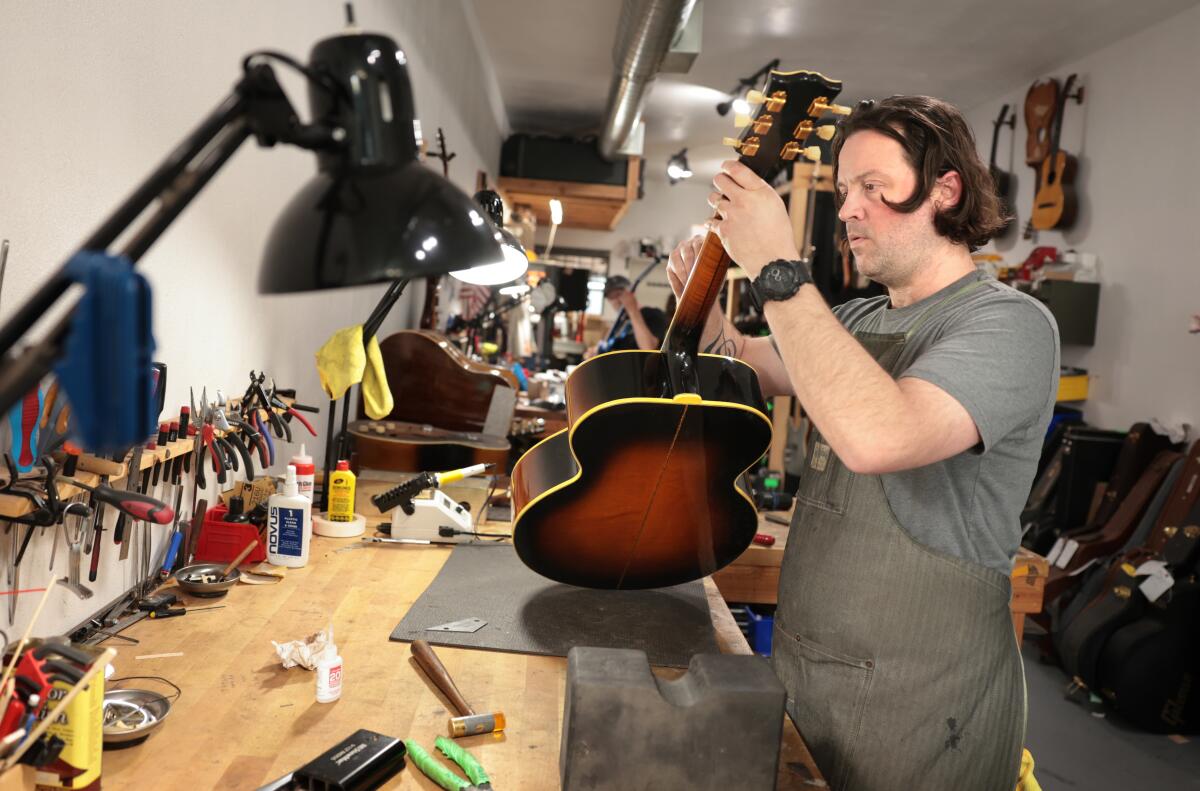
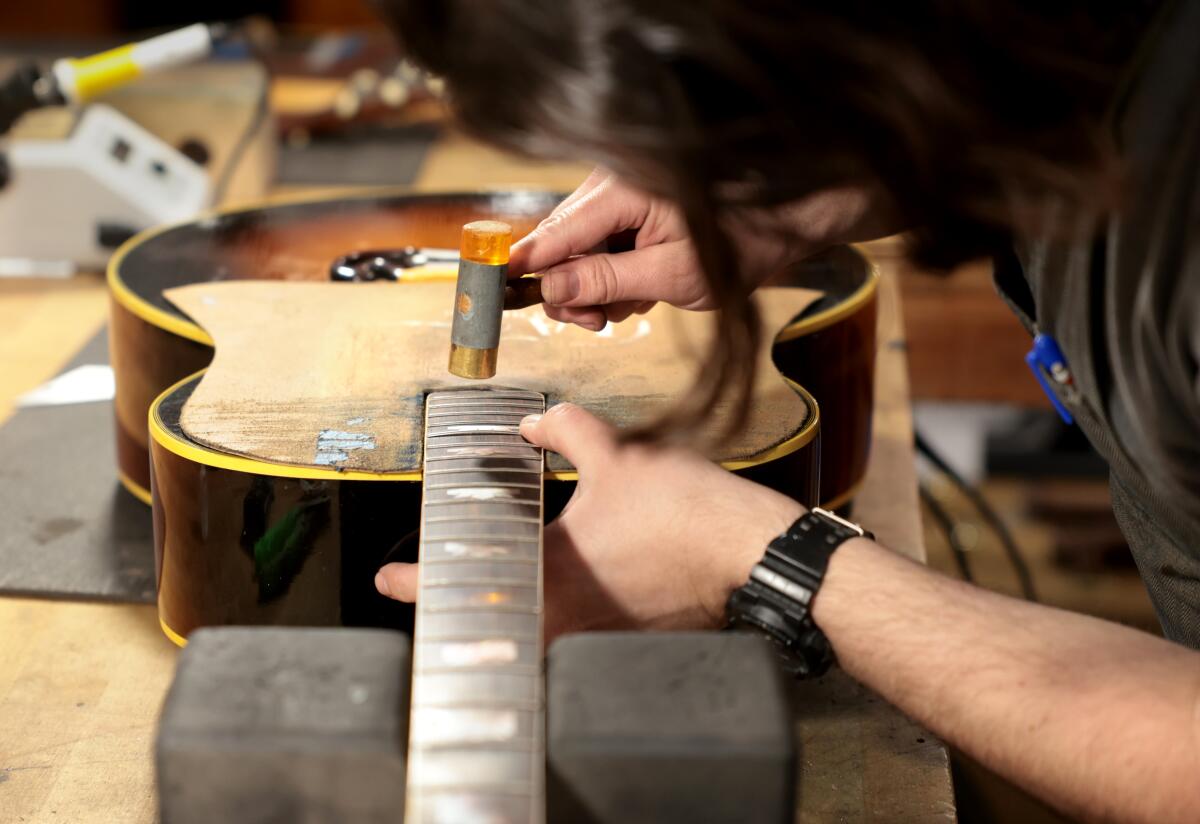
In the middle of April, he went to his shop on a Sunday when it was closed, so no patrons saw the German-made 12-string Framus Hootenanny he was working on. The guitars generally sell for between $2,000 and $3,000, according Schuermann, but this one was different. He didn’t need the extra attention. It was time to remove the neck, the moment when everything can go right or wrong.
Weeks earlier, in mid-March, Schuermann had gotten a call from Mike Adams of Julien’s Auction House in Beverly Hills. Adams had a 12-string guitar in need of restoration before it would be sold. It needed a neck reset. But it was clear from the start that this was not an average guitar.
“There was a lot of cloak and dagger to it, which I’m not used to,” said Schuermann. “I asked him what’s the guitar and he said, ‘I can’t tell you.’”
Before he would give the instrument to Schuermann, Adams handed him a four-page nondisclosure agreement that Schuermann had to sign in order to get the gig. Schuermann read through the language and signed the document.
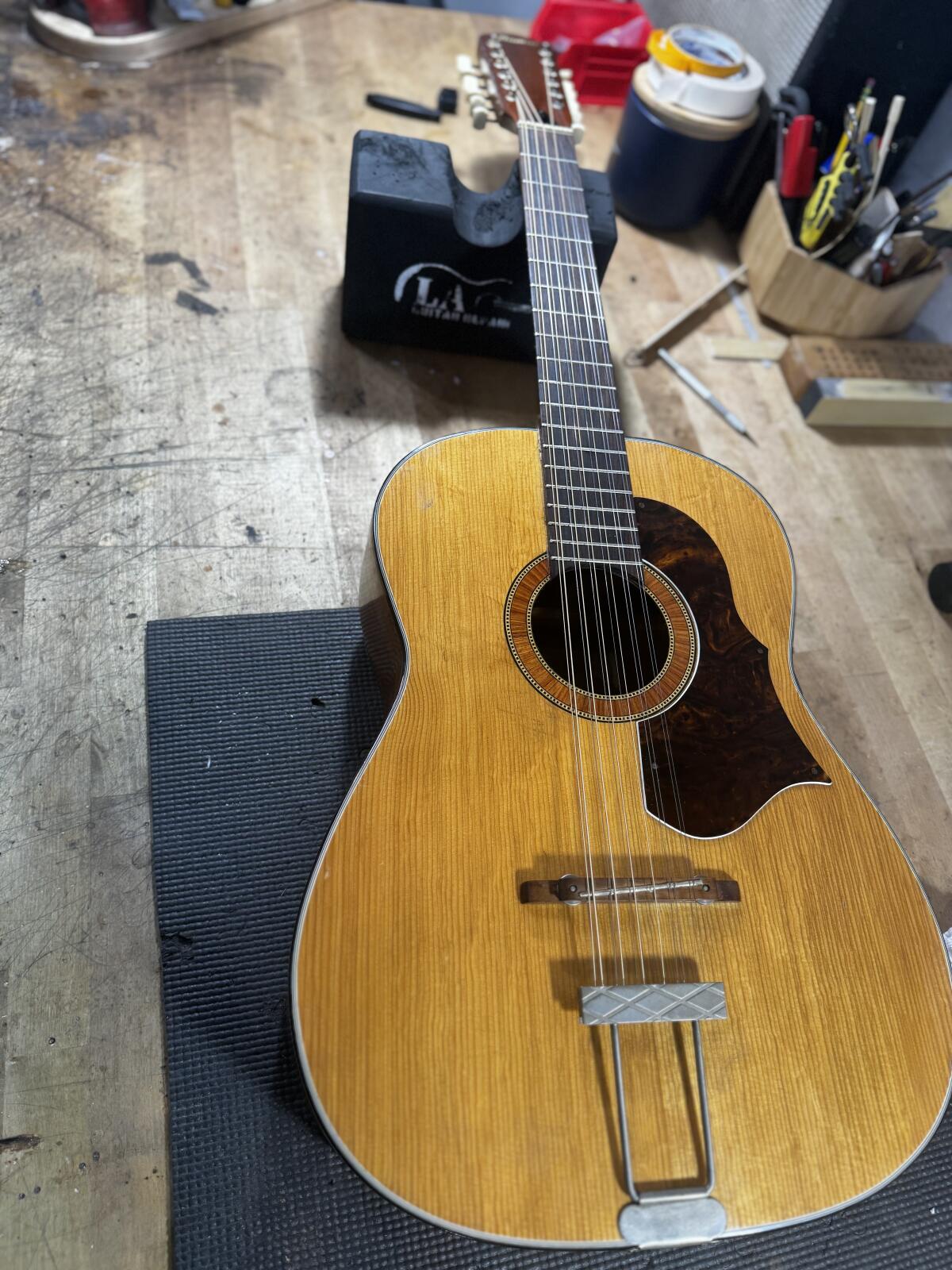
“I sign it. He opens the case. I see the guitar. He says, ‘This is John Lennon’s guitar from ‘Help!’”
Schuermann said he believes he was the third or fourth person to see the guitar. He talked to his wife about whether he should take on the responsibility of fixing such an expensive item, an artifact of the 1960s Brit-pop invasion. She told him to do it.
The first thing Schuermann did the next day was call his insurer and raise the coverage of his store by $3 million.
The guitar’s path to the auction house is the stuff of legend. It was found in a home in the English countryside, where it had been forgotten for more than a half-century inside a worn and dusty Maton guitar case.
A man stumbled upon the case in the attic of his parents’ longtime home, which they were preparing to vacate.
When he asked about it, his father said, “Oh, that’s John’s.”
Lennon had acquired the guitar in 1964 and played it during the 1965 sessions for the Beatles’ LP “Help!” It was photographed being played by both Lennon and George Harrison — as was the Maton case. The guitar also made an appearance in the movie “Help!,” where Lennon strums it as the band plays “You’ve Got to Hide Your Love Away.”
A year after he bought it, Lennon gave the guitar to Gordon Waller, who with Peter Asher formed the pop duo Peter & Gordon. Asher’s sister Jane Asher dated Paul McCartney in the ’60s, and Peter & Gordon recorded several songs credited to Lennon and McCartney. Waller gave the guitar to his manager at some point, who took the instrument home and threw it in the attic, where it remained for 60 years.
The family contacted Julien’s Auction House, which confirmed the guitar’s legitimacy with the help of Beatles expert Andy Babiuk.
Babiuk knew the instrument immediately. There were only a few lost Beatles guitars unaccounted for, he said. They can be counted on one hand: the sonic blue Fender Stratocaster Lennon used on “Ticket to Ride,” the Gretsch Country Gentleman that Harrison played on Ed Sullivan — and the “Help!” Framus Hootenanny.
“Historically it’s a super-important guitar,” Babiuk said.
Babiuk said he confirmed the guitar was legitimate by studying old Beatles photos and matching the case as well as the grain of the wood.
“No two pieces of wood are the same. This is a really forensic way of doing it,” he said.
Despite the exciting find, there were issues. The frets had corroded, and the neck joint had loosened so much that the guitar could not be played safely, according to the auction house. In order to sell the guitar, Julien’s would need to get it repaired, an expert advised.
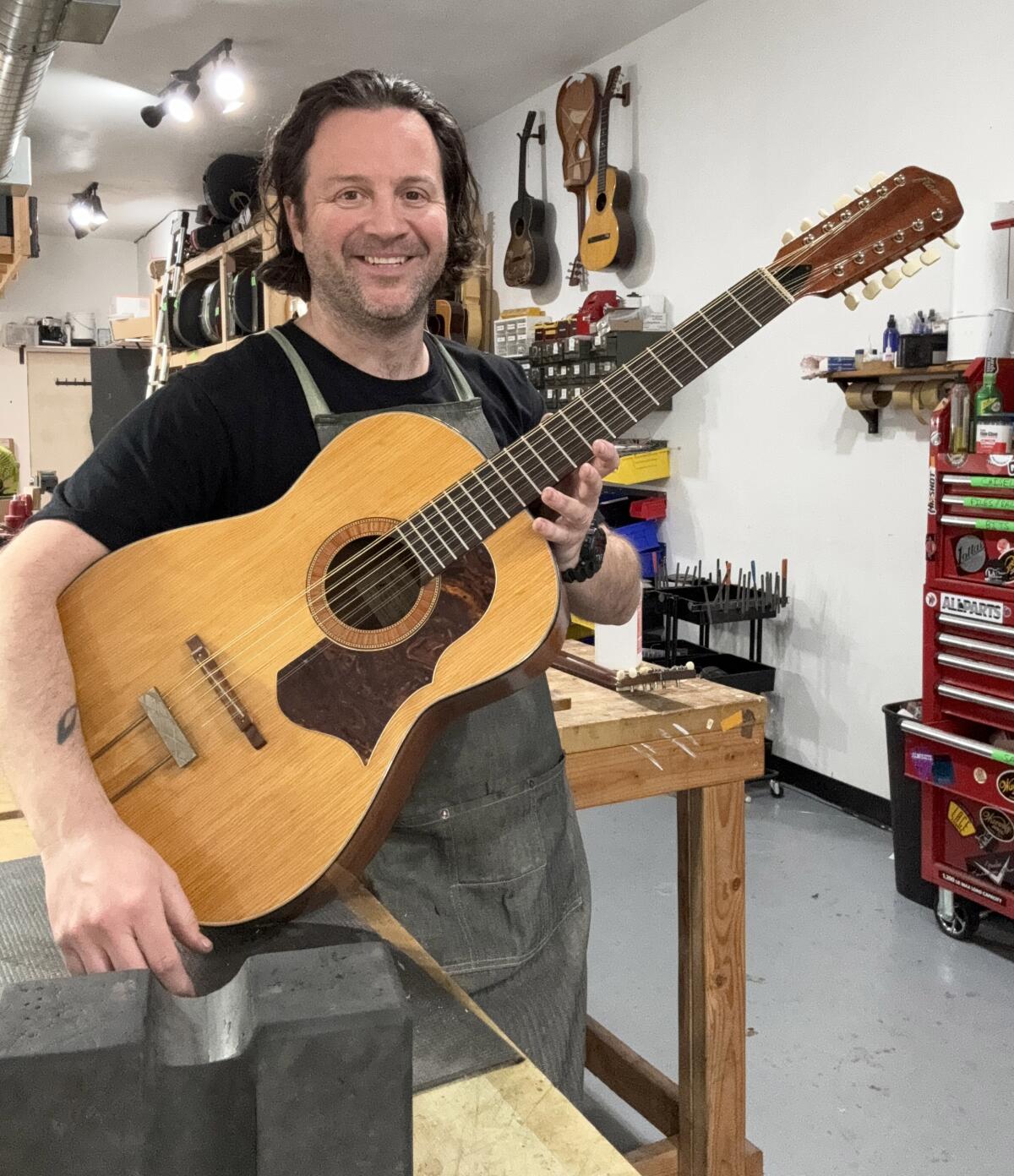
Of all the work Schuermann did on the guitar — including steam and heat treatment of the bridge and adding a removable shim for stability — the neck reset was the biggest undertaking.
He put on the album “Help!” and said a little prayer to Lennon’s ghost. Then he removed the neck and everything went right. He adjusted the angle and reset it, then restrung the guitar. Everything went according to plan.
“The neck pull, as it’s called, came out completely flawless. There was no damage to any finish, which is kind of like hitting a home run when you need to hit a home run. You get one shot at it,” he said.
The biggest relief was when Schuermann played the first chords on the repaired Hootenanny and it played not just right, he said, but perfectly. To his ears, it sounded just like it did in the sessions with Lennon and Harrison.
The work was done and Schuermann could relax.
He played the guitar, songs by the Beatles like “Norwegian Wood (This Bird Has Flown)” and “You’ve Got to Hide Your Love Away.” That’s when the enormity of the process hit him.
He had worked on other expensive guitars in the past. Probably the most famous was for the family of Robbie Robertson of The Band: the double-neck Gibson on which he played “The Weight.” That guitar must have been worth about $1 million, Schuermann estimated.
But Lennon’s guitar was “levels” above that.
“It could be argued that it’s more historically significant than the other Lennon guitar we sold for $2.4 million in 2015,” said Darren Julien, a founder of Julien’s Auction House.
The auction will take place May 29 and 30.
“It’s a little dizzying,” Schuermann said. “I’m proud of how clean the guitar was and in immaculate condition and left my shop in even better shape.
More to Read
Sign up for Essential California
The most important California stories and recommendations in your inbox every morning.
You may occasionally receive promotional content from the Los Angeles Times.











